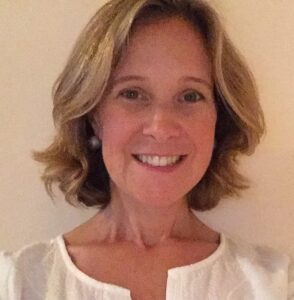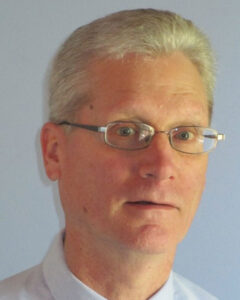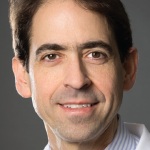ACR Convergence 2020—When it comes to securing research grants, the competitive environment can be daunting and frustrating. A panel of experts at ACR Convergence 2020 in November offered a range of tips to improve your chances, from the basic (e.g., make sure to read the instructions) to the advanced (e.g., capitalize on special technologies at your institution). The panelists repeatedly emphasized the importance of collaboration, diversifying funding sources and staying determined in the face of disappointment.

Karen Costenbader
Karen Costenbader, MD, MPH, professor of medicine, Harvard Medical School, Boston, said a strong grant application should present a clear background and rationale for the project and build up to the conclusion that the research fills an important knowledge gap.
“Overall, you want your grant to tell a convincing story,” she said.
There is no secret or magic potion, Dr. Costenbader said. But surrounding yourself with good mentors and a good team—resulting in good advice and generation of quality ideas—is a must. She also said that a research career and pursuit of grants is “not a straight path.”
“You have to really generate a lot of ideas,” she said. “And that’s why it’s really good to be on a strong, creative team.”
In addition, be sure to read the fine print of a grant’s instructions. “I’ve had grants turned away for the silliest and most trivial reasons, like having a budget one penny over the limit,” she said.
Other tips included disseminating your research through speaking engagements and other methods to build a reputation in your area of interest; taking courses in obtaining grants; employing a “funnel-shaped” writing approach that begins with the general and leads to the specific; and choosing definitive words, such as “will” and “identify” rather than “if” and “explore.”
“It’s the passion for your work that will keep you going,” Dr. Costenbader said. “So love what you do.”
Finding a Niche
William Robinson, MD, professor of medicine, Stanford University, Palo Alto, Calif., said he works to create a niche by building or tapping into special resources, such as systems, technologies and patient cohorts at his institution, “to make one’s proposals as compelling as possible.” In his lab, researchers built technologies around profiling antibodies and B cells, as well as sequencing technologies to sequence B cell repertoires, then leveraged those technologies in their studies.

William Robinson
Dr. Robinson stressed finding good collaborators and colleagues and crafting relationships that benefit all parties. He also recommended assembling a diverse array of funding sources: multiple government agencies—such as the U.S. National Institutes of Health, Department of Defense and Veterans Affairs—foundations and industry.
But a “thick skin” is also vital, he said.
“Once you become an assistant professor, you realize that rejection becomes an everyday part of life. Your paper’s rejected, your grant’s rejected, and you have to be persistent and tough,” Dr. Robinson said. “Over time, you will have successful grants, and you will have successful papers.”
Checklist for Success
John Peyman, PhD, a subject matter expert at the National Institute of Allergy and Infectious Diseases (NIAID), said applicants must persuade reviewers that their project is both significant and feasible. “Expertise in basic science or clinical research does not guarantee that you will get a grant,” he said.

John Peyman
Dr. Peyman presented a checklist of 40 actions derived from discussions by peer reviewers of thousands of applications over many years. Addressing these items will give an application the best chance of success, he said.
In the “Significance” category, the checklist items include being sure a project has “important implications that expert reviewers in my field will understand” and that the research will not just confirm previous work in the field.
“Critically recapitulating the state of the art, including your own preliminary data, focuses the reviewers’ attention on reasons to do the study,” Dr. Peyman suggested.
To demonstrate “Innovation,” applicants need to assure reviewers the project will “move the field forward in a major way.” “A common criticism is that plans, if completed, would produce merely incremental progress in the field,” he said.
The “My Thinking and Writing” checklist section suggests making sure sentences are clear and strong, tailoring the writing to a specific study section’s scope and members, and incorporating constructive criticism to strengthen an application’s reasoning.
To demonstrate “Feasibility,” an applicant should make sure the proposed methods have been published, that a project isn’t over-ambitious and that they explain the feasibility of every aim of the project. If reviewers don’t understand the methods and resources the applicant has available, they might “ding you for lack of feasibility,” Dr. Peyman said.
Under “Strategy and Resources,” checklist items include making sure to list the expected results, explain how the methods will achieve robust and unbiased results and respond effectively to reviewer critiques.
The “Specific Aims” items include showing that each aim of a project will test a hypothesis based on the researcher’s preliminary data and assuring reviewers that each aim can be completed independent of the outcome of the other aims.
“I consider the process of peer review a negotiation or discussion with reviewers, not an argument,” Dr. Peyman said. “Demonstrate your expertise in the application, and make sure to show them that you know how to play the game.”
Thomas Collins is a freelance medical writer based in Florida.


